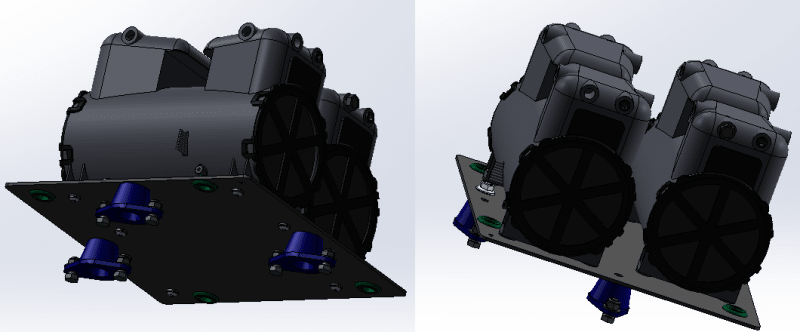I'v been told that a 3 point mount is better to reduce vibration but wanted to expand on how and why it's better. The mount is for a couple of 1/2HP pumps on a single baseplate with isolation mount points to reduce vibration.
The 2 pumps are similar are not the same model (1 for compressed air and 1 for vacuum). Here is mock up of the 3 point mount, but would love to hear if there is a better option to reduce vibration. When both pumps are running where it'll oscillate where they may cancel each other out, combine to have a higher vibration, and most likely somewhere in between.

Thanks!
The 2 pumps are similar are not the same model (1 for compressed air and 1 for vacuum). Here is mock up of the 3 point mount, but would love to hear if there is a better option to reduce vibration. When both pumps are running where it'll oscillate where they may cancel each other out, combine to have a higher vibration, and most likely somewhere in between.

Thanks!
